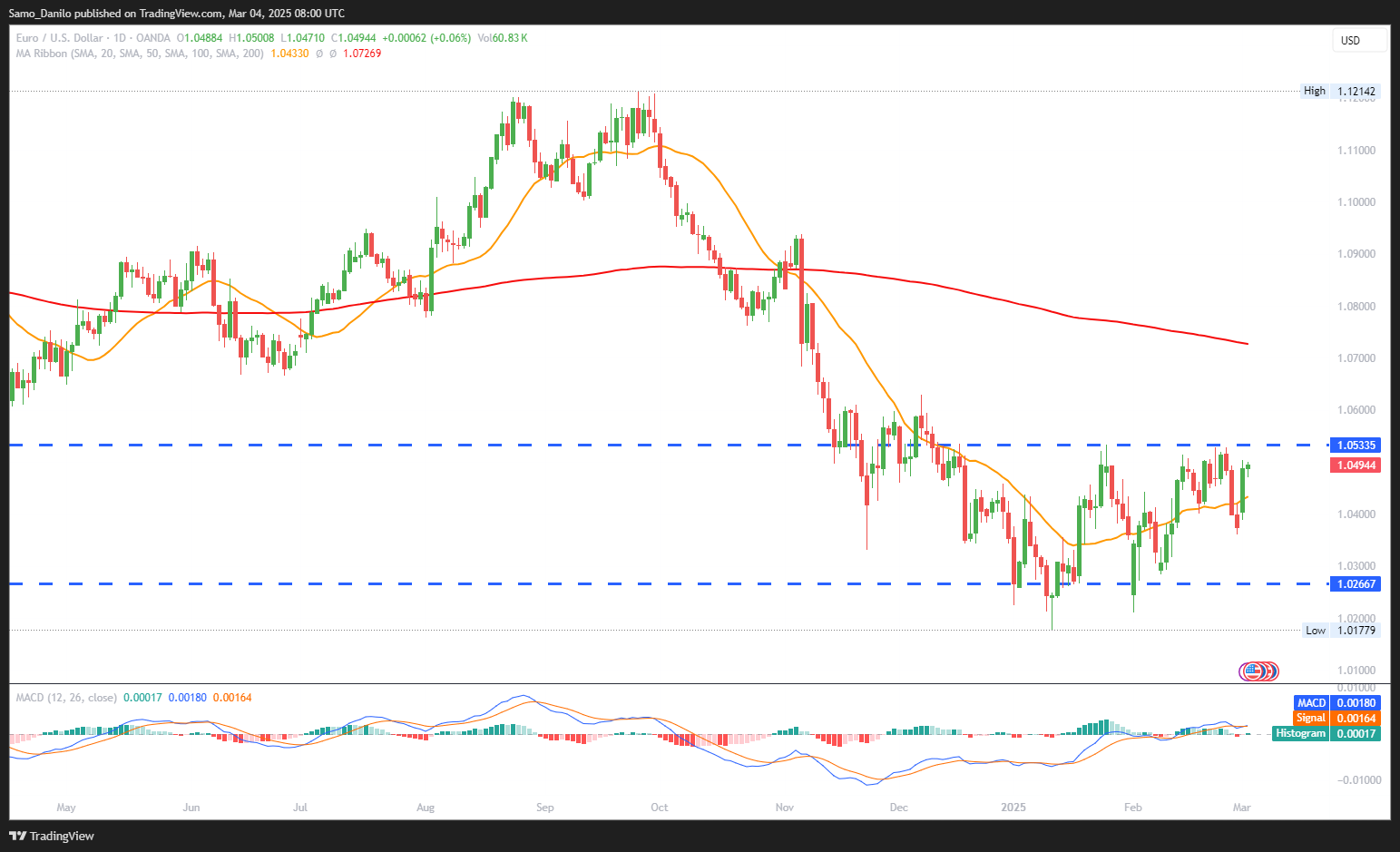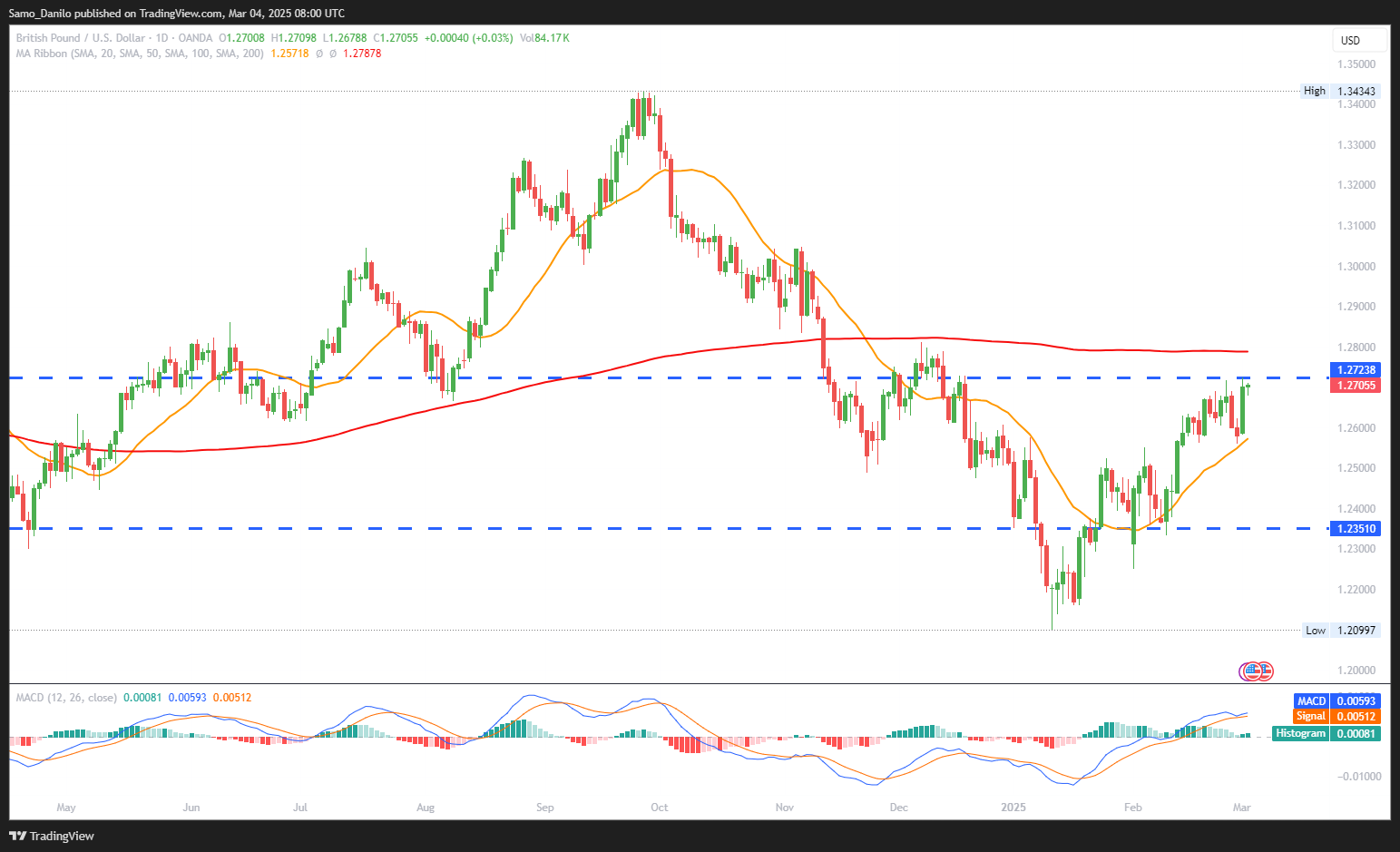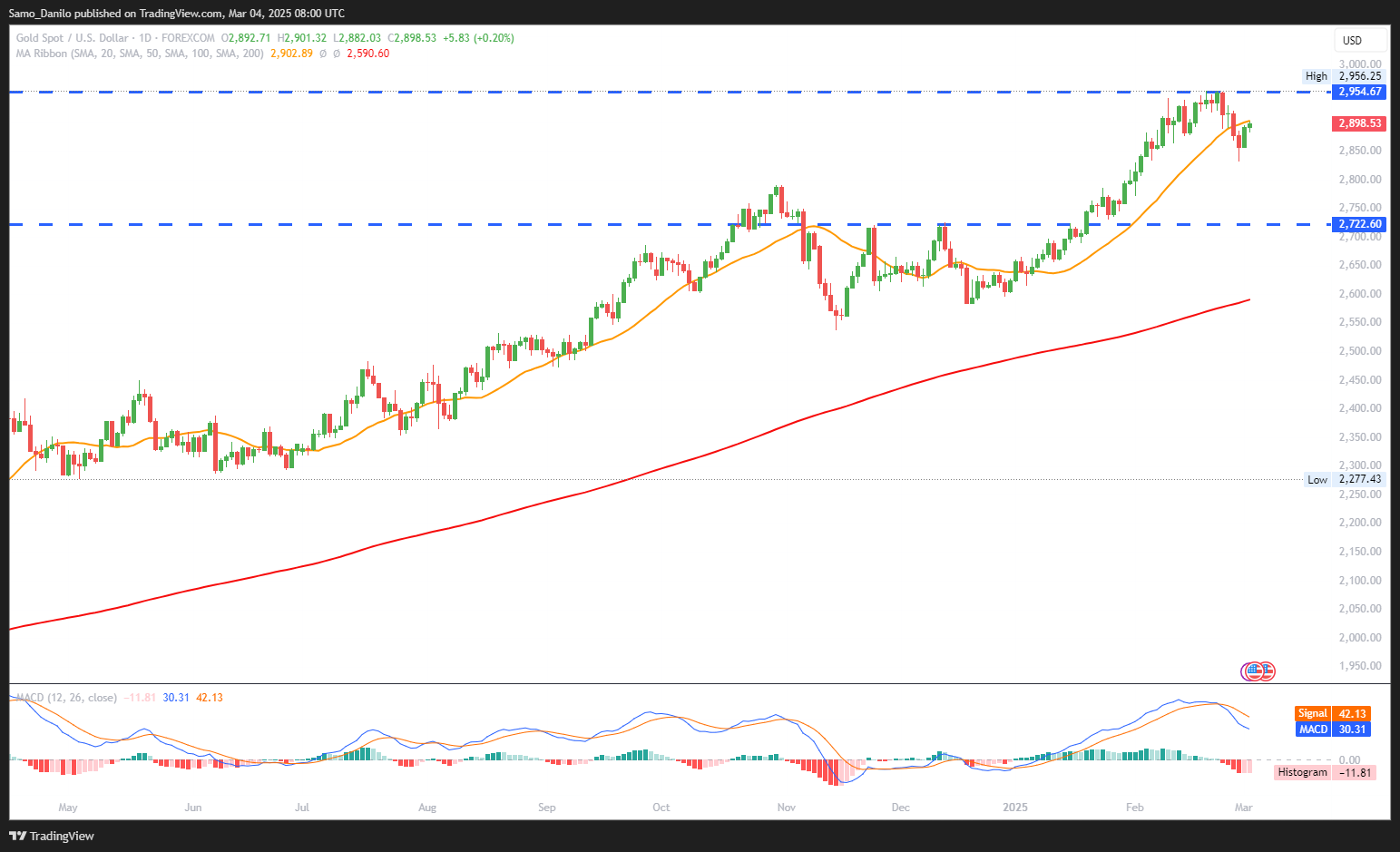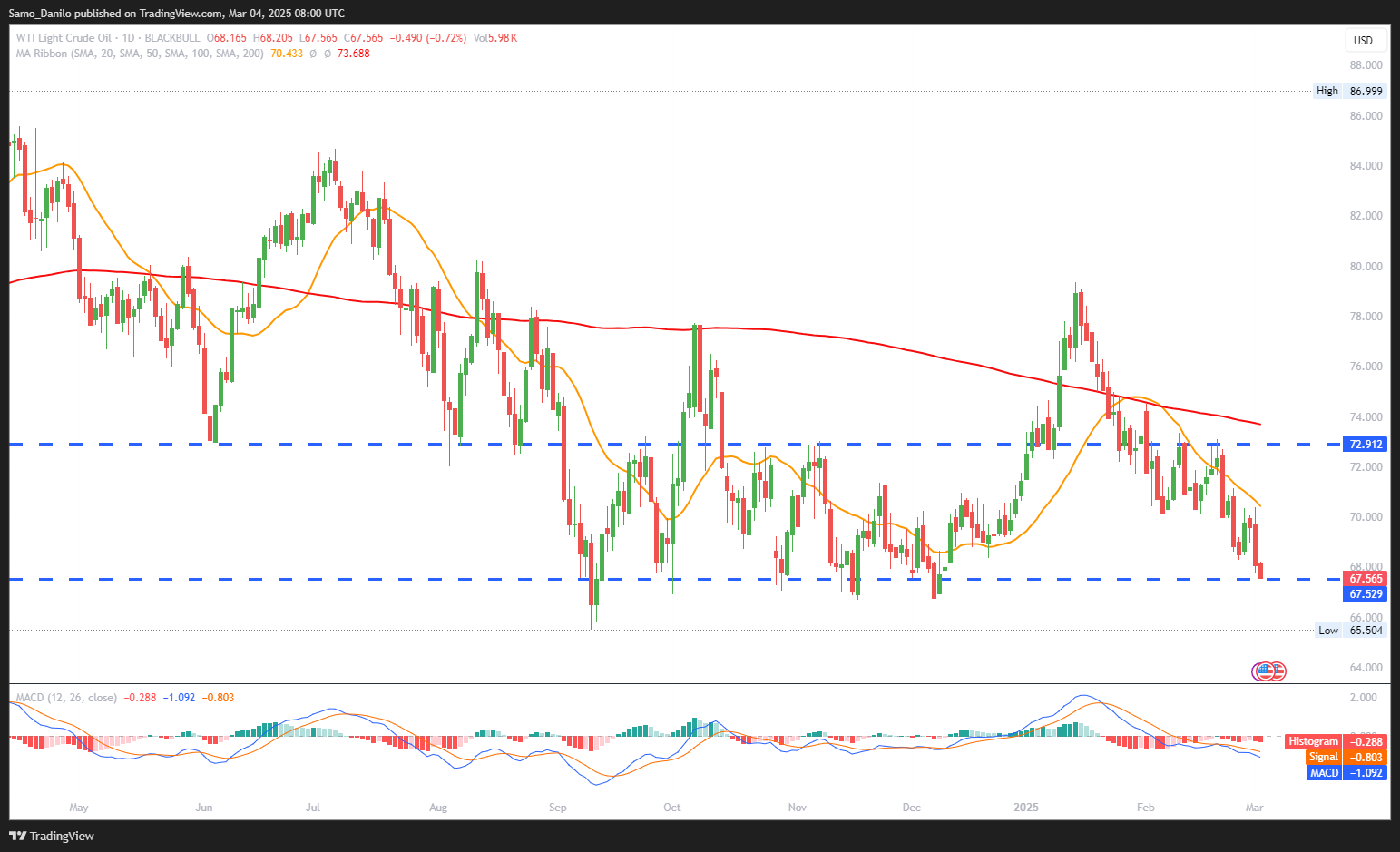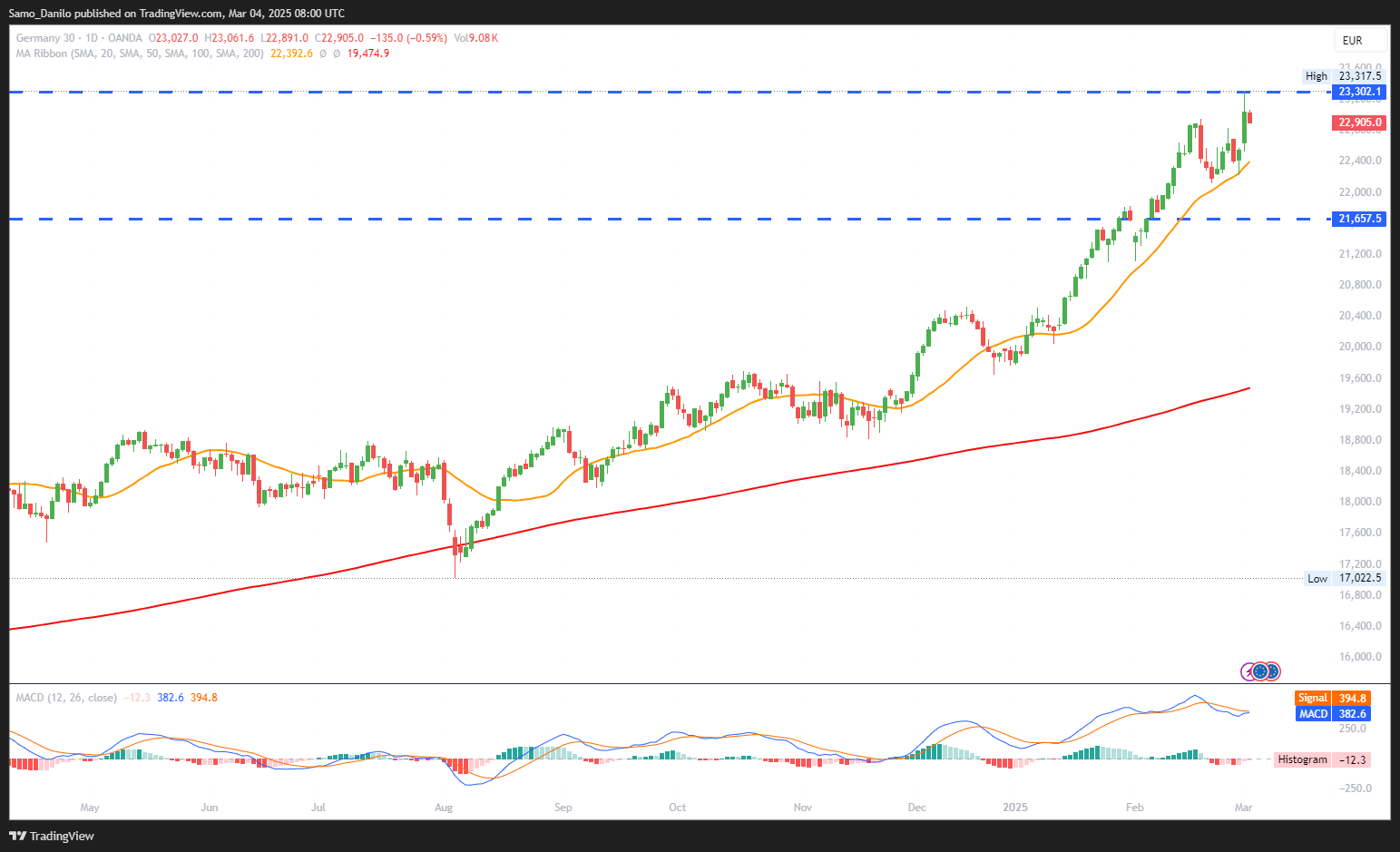EURUSD
- EUR/USD Price: The EUR/USD pair continues its upward trajectory for the second consecutive session, trading around 1.0490 during European hours on Tuesday. The Euro benefits from ongoing geopolitical developments and economic data releases.
- France President: French President Emmanuel Macron and his foreign minister have proposed a partial one-month ceasefire between Russia and Ukraine. This move signals Europe’s efforts to strengthen support for Kyiv, particularly as uncertainty looms over US backing.
- Eurozone Inflation: The February flash Harmonized Index of Consumer Prices (HICP) for the Eurozone showed a 2.4% year-over-year increase, slightly lower than January’s 2.5% but still supportive for the Euro. The data suggests inflation remains persistent ahead of the European Central Bank’s (ECB) policy decision.
- ECB Meeting: The Euro faces potential headwinds ahead of the ECB’s meeting on Thursday. Market participants widely anticipate a 25 basis point (bps) cut to the Deposit Facility Rate, bringing it down to 2.5%. A dovish ECB stance could limit further upside potential for the shared currency.
- US Manufacturing Data: The ISM Manufacturing PMI declined to 50.3 in February, missing expectations of 50.5 and falling from January’s 50.9. However, S&P Global’s final Manufacturing PMI for February surprised to the upside at 52.7, indicating resilience in the US manufacturing sector.
Closing statement: EUR/USD maintains its bullish momentum but faces resistance ahead of the ECB meeting, where a rate cut could weaken the Euro. Inflation data and geopolitical developments will remain key drivers, while US economic indicators could influence short-term USD movements.
GBPUSD
- GBP/USD Price: The GBP/USD pair edges higher, continuing its bullish momentum from the previous session and hovering around the 1.2700 mark during European trading hours on Tuesday.
- Technical Indicators: The daily chart suggests a continued bullish trend, with the pair maintaining its position within an ascending channel pattern. The 14-day Relative Strength Index (RSI) remains above 50, reinforcing the presence of buying momentum.
- BoE Policy: Bank of England (BoE) Deputy Governor Dave Ramsden emphasized a “careful and gradual” approach to monetary policy. He cited labor market uncertainty and global trade risks as key considerations for the central bank’s future decisions.
- US Data and Fedspeak: Several Federal Reserve (Fed) policymakers are scheduled to speak this week, offering potential clues on future rate policy. Additionally, investors will closely watch the US ISM Services PMI data on Wednesday, which could impact the USD’s near-term direction.
- UK Data: With a light economic calendar on the UK side this week, market sentiment remains driven by broader macroeconomic themes, including trade tariff threats and anticipation of Friday’s US Nonfarm Payrolls (NFP) report.
Closing statement: GBP/USD remains supported by technical strength and cautious BoE policy signals but faces potential volatility ahead of key US data releases. Investors will watch for Fed commentary and NFP data for further directional cues.
XAUUSD
- XAU/USD Price: The daily chart indicates that gold's upward movement has stalled at the 21-day Simple Moving Average (SMA) of $2,900. Meanwhile, the Relative Strength Index (RSI) has turned slightly lower but remains above 50, suggesting that the overall bullish bias is still intact.
- Tariff War: Market sentiment remains risk-averse as a global tariff war appears inevitable. US President Donald Trump reaffirmed 25% tariffs on Canada and Mexico, effective Tuesday, and has already signed an order to raise tariffs on Chinese goods to 20%.
- Canada Announcement: The Canadian Prime Minister’s Office confirmed that Canada will impose retaliatory tariffs on US imports starting Tuesday, initially applying a 25% tariff on US goods worth C$30 billion if US tariffs take effect as planned.
- China Countermeasures: China's Commerce Ministry announced early Tuesday that it would take "necessary countermeasures" to protect its legitimate rights and interests, increasing uncertainty in global trade relations.
- Military Aid to Ukraine: According to Bloomberg, citing a defense official, the United States has paused all ongoing military aid to Ukraine under direct orders from President Trump. Defense Secretary Pete Hegseth has been tasked with implementing the halt, raising geopolitical tensions further.
Closing statement: Gold prices remain supported by geopolitical uncertainties and trade war fears. However, technical resistance at $2,900 may cap further upside in the near term. Investors will closely monitor developments in trade policies and geopolitical risks for the next market catalyst.
CRUDE OIL
- WTI Oil Price: West Texas Intermediate (WTI), the US crude oil benchmark, is hovering around $67.80 during early European trading on Tuesday. The market remains under pressure as global economic concerns and trade tensions weigh on demand expectations.
- OPEC+ Plans: The Organization of the Petroleum Exporting Countries and its allies (OPEC+) confirmed that it will proceed with its plan to increase oil production from April. This decision follows a series of output cuts made to stabilize the market, potentially adding downward pressure on crude prices.
- Geopolitical Developments: Possible peace talks between Russia and Ukraine, along with the latest US tariff threats, could contribute to oil's downside. President Trump confirmed on Monday that tariffs on Canada and Mexico would take effect on Tuesday, adding another layer of uncertainty.
- China's Reaction: China’s Commerce Ministry announced on Tuesday that it would impose additional tariffs of up to 15% on key US agricultural imports, including chicken, pork, soy, and beef. These measures, set to take effect on March 10, could further strain US-China trade relations and dampen global economic growth.
- US Recession Risks: Fears of a US economic downturn have intensified as expectations rise for Trump’s tariffs to fuel inflationary pressures and reduce investor confidence. The Atlanta Fed GDP tracker now sits at -2.8%, reflecting a sharp 5% drop in just two business days.
Closing statement: Crude oil prices face headwinds from rising supply expectations, US-China trade tensions, and weakening economic indicators. The market will closely monitor upcoming OPEC+ decisions and geopolitical developments for further direction.
DAX
- DAX Price: The DAX is expected to consolidate its recent rally on Tuesday, maintaining its position above the 23,000-point mark for the first time. This suggests a continuation of bullish momentum despite growing geopolitical uncertainties.
- German Manufacturing PMI: Germany’s Manufacturing PMI climbed to 46.5 in February, up from 45 in January, marking its highest level in over two years. This improvement indicates a gradual recovery in the manufacturing sector, though it remains in contraction territory.
- HCB Chief Economist: Dr. Cyrus de la Rubia, chief economist at Hamburg Commercial Bank, noted that the downturn in Germany’s industrial sector might soon come to an end. He highlighted that while incoming orders are still declining, the pace of contraction is now the slowest since April 2022.
- Tariff War: Investors are closely watching US President Donald Trump’s trade policy, as new tariffs on Canadian and Mexican imports take effect on Tuesday. These measures could impact global trade flows and weigh on European market sentiment.
- Military Aid to Ukraine: The US government has temporarily halted military aid to Ukraine, three years after the start of the war with Russia. This development increases geopolitical uncertainty and may influence European investor sentiment, particularly for defense-related stocks.
Closing statement: The DAX remains on solid footing above 23,000 but faces potential headwinds from trade tensions and geopolitical risks. Investors will focus on US policy decisions and economic data for further direction.
